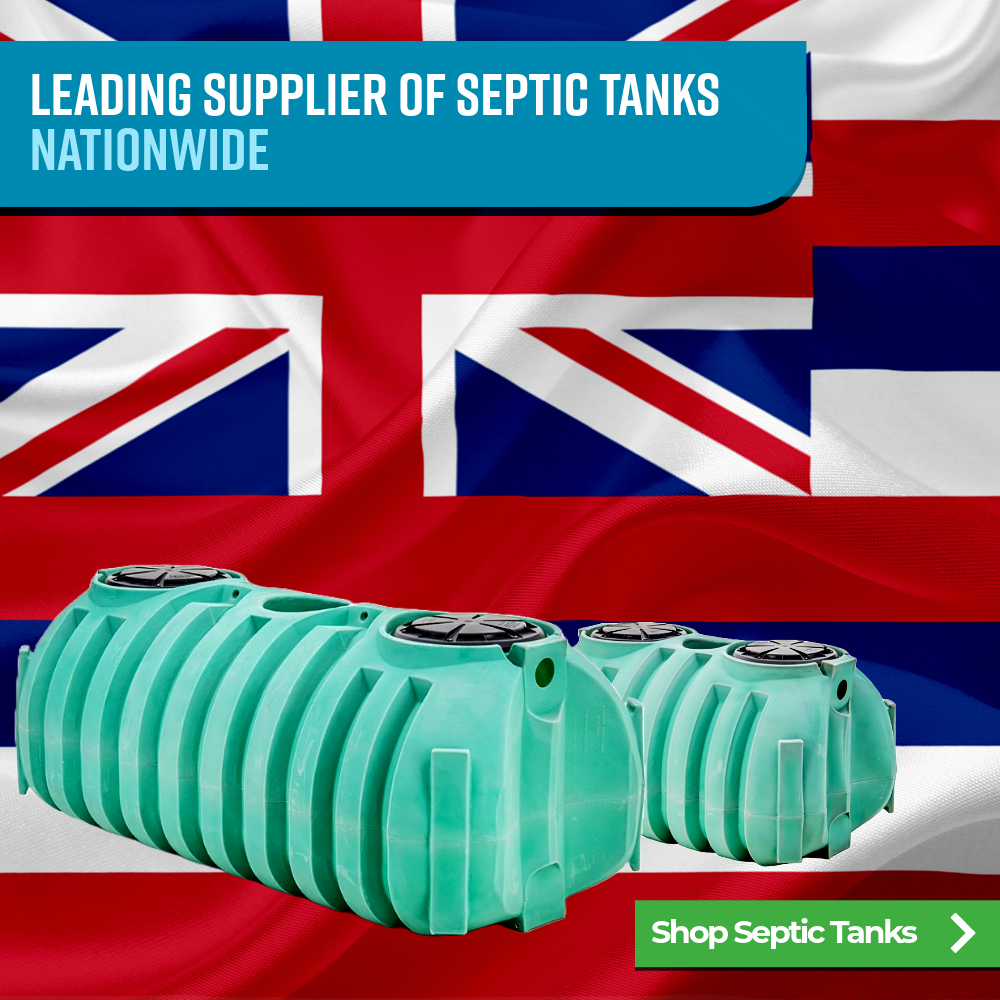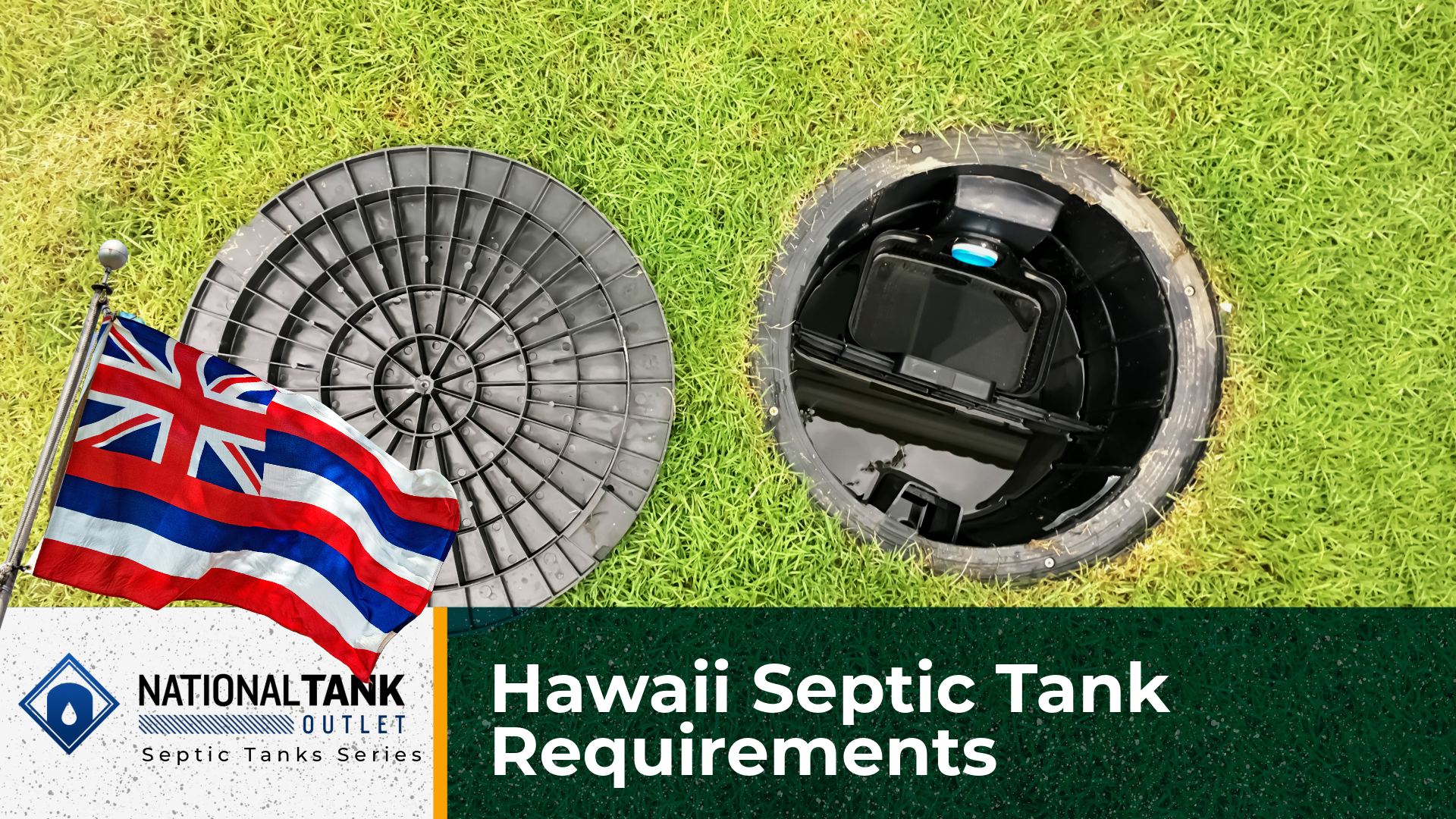
In the state of Hawaii, maintaining public health and preserving the environment is paramount due to the state’s island nature, limited land, and resources. This commitment is reflected in the Hawaii government and its regulations and requirements for the installation of septic tank systems. According to the Hawaii state, more than 38% of the population relies on a septic tank or cesspool to manage the wastewater from local properties. In this article, we will guide you through the Hawaii septic tank requirements to educate homeowners and property owners on how to ensure compliance.
Hawaii State Septic Tank Regulations
The Hawaii Department of Health (DOH) maintains and governs septic tanks through its Wastewater Branch. The Hawaii Administrative Rules (HAR) Title 11 Chapter 62 establishes the regulatory framework for Hawaii wastewater management.

Local county, city, or island departments may have additional regulations depending on any environmental concerns in the region. With septic tank installation regulations and requirements, checking with your local authorities is always recommended.
On a further important note, the state of Hawaii is phasing out old cesspools. This is because cesspools are considered substandard and environmentally detrimental. Passed in 2017, Hawaii Act 125 made installing new cesspools in Hawaii prohibited and required existing systems to be converted to an alternative treatment system by 2050. Approved Hawaii cesspool alternatives include conventional septic tanks and aerobic septic systems.
Hawaii Septic Tank Definitions
In the state of Hawaii, a septic tank system is typically referred to as an Individual Wastewater System (IWS). This term is used by the Hawaii Department of Health’s Wastewater Branch, which is responsible for regulating these systems. The Hawaii Administrative Rule Section 11-62-33.1 outlines the specific requirements for new and proposed treatment units, including conventional septic tanks and aerobic treatment systems.
Can I Install My Own Septic Tank in Hawaii
When it comes to installing a septic tank in Hawaii, the process is fairly complex and requires an extensive understanding and capabilities to meet regulatory codes and compliance. To answer the question of whether you can install a system yourself, no, you cannot install your own septic tank in Hawaii. The state’s regulations require homeowners to use licensed professionals for both the design and installation of a septic tank system.
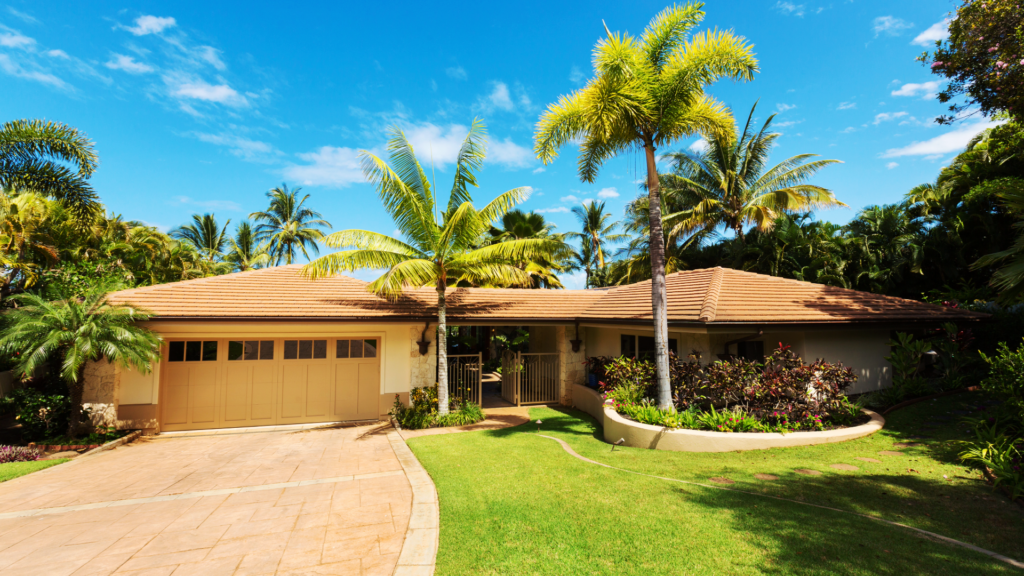
How to Install a Septic System in Hawaii
According to the Individual Wastewater Systems branch of the Hawaii Department of Health, a homeowner should follow the following steps to install a septic tank in Hawaii.
- Hire a Licensed Civil Engineer: A Hawaii-certified civil engineer will be able to design a plan for a new septic tank or aerobic treatment system on the property. The Hawaii Department of Commerce and Consumer Affairs (DCCA) maintains a registry of approved civil engineers for septic system design as well as a list of Hawaii licensed engineers, their company, and contact info.
- Submit Plans for Approval: The hired licensed civil engineer will draft the plan and submit it to the Wastewater Systems branch for you. There may be information and signatures required from you as the property owner.
- Hire a Licensed Contractor: After the plan is approved, you must hire a Hawaii State licensed contractor to perform the construction work according to the engineer’s plan. The contractor must hold either an A, C-9, C-37, C-37a, or C-43 license. The Hawaii DCCA’s registry can also be used to find the proper contractor. It is important that the contractor hold the correct license as the Hawaii Wastewater Branch will not accept the work otherwise.
- Post-Construction Engineer Inspection: After construction, the hired engineer or company must perform an inspection and approve the project has been completed as planned and to compliance, then file the necessary reports with the Wastewater Branch.
- Final Review and Approval: The Hawaii Wastewater Branch will review the engineer’s final submission, and then either approve or reject. If rejected, the department will explain why and require further work to complete the project. If approved, the department will issue an approval to use letter, and the new septic tank system will be good to go.
See the following from the Hawaii Wastewater Branch for septic tank information for nondomestic, commercial, and agriculture applications.
Can a Polyethylene Septic Tank Be Installed and Used in Hawaii
At the time of this writing, there isn’t direct guidance from the State Departments stating whether polyethylene septic tanks can be used in Hawaii. Hawaii codes mention concrete and fiberglass septic tanks but do mention poly septic tanks at this time. The University of Hawaii at Manoa report on Household Wastewater Treatment Systems indicates concrete tanks are common but fiberglass and polyethylene are also used. There is also a supplier of polyethylene septic tanks in Hawaii, which seems to support that they are approved for use. Given the remote nature of the Hawaiian Islands, locally sourcing a poly septic tank will likely be the most cost-effective option.
Key Hawaii Septic Tank Requirements
Permits
The necessary permit filing and plan approval for installing a septic tank in Hawaii is handled by the civil engineer who must be hired to perform the system planning and design.
Site Evaluations
In Hawaii, everything aside from the excavation and construction of the septic tank installation is handled by the civil engineer. This includes the necessary site evaluations. When hired, the civil engineer will arrange to visit your property to evaluate the site based on property markers, nearby structures, soil types, underground geology, topography, nearby water sources, water wells, and utilities, and perform a percolation test.

This evaluation is necessary to blueprint a septic system design plan as well as determine whether a conventional gravity fed septic system is suitable or if an aerobic treatment system will be needed.
Septic System Location, Tank Size, and Design
The civil engineer will oversee and handle all details of the proper location, size, and system type needed for the individual wastewater system. Typical septic tank sizes in Hawaii are 1,000 gallons and 1,250 gallons for septic systems that service residential homes.
Installing a Septic Tank in Hawaii
The installation of a septic tank system in Hawaii must be performed by a state-licensed contractor. The evaluation, design, and placement are done by a civil engineer who provides the construction blueprints to a contractor to complete. According to the Hawaii Wastewater Branch, the contractor must hold either an A, C-9, C-37, C-37a, or a C-43 license.
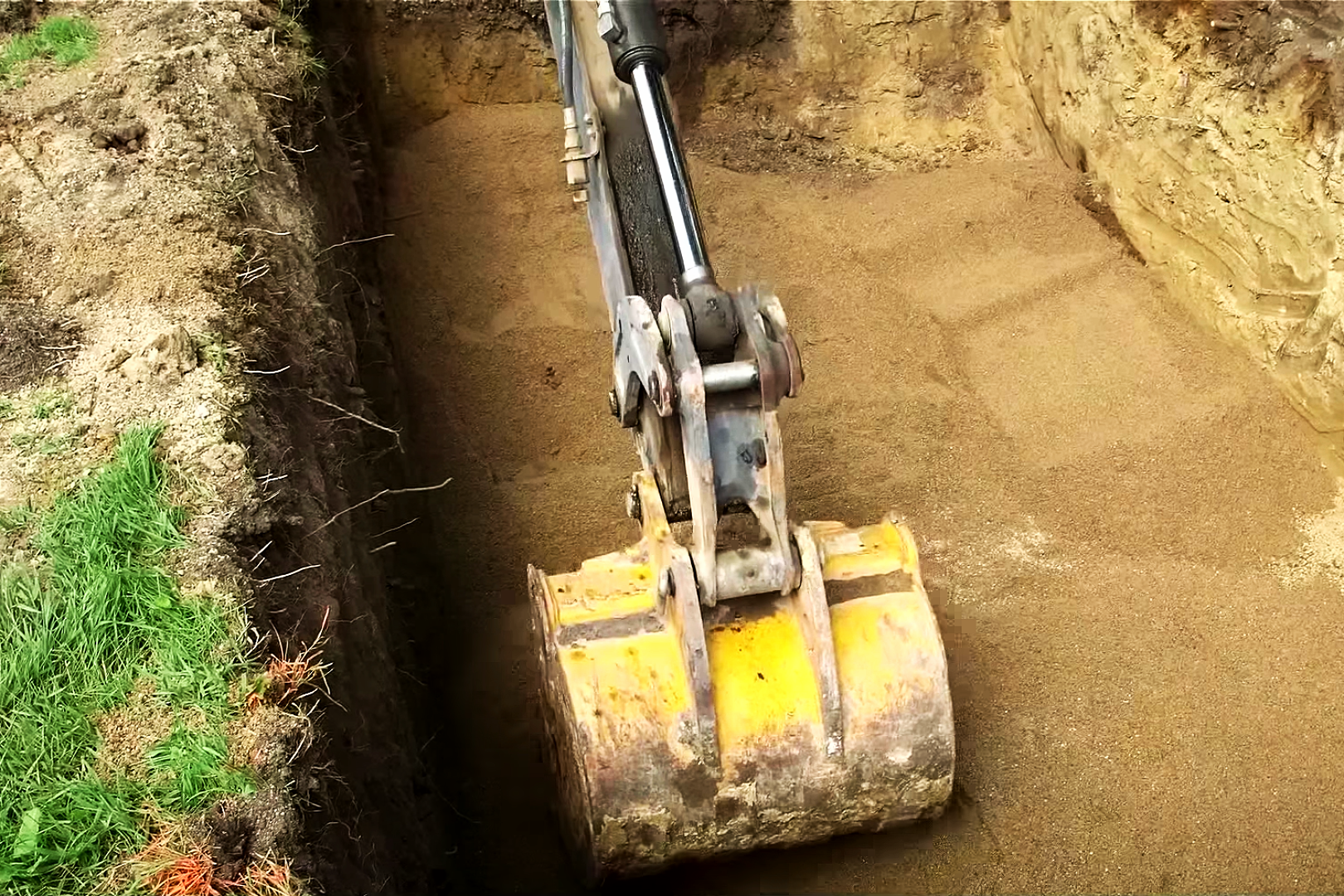
Maintenance and Pumping
Hawaii septic tanks are recommended to be pumped once every 3 to 5 years, according to the University of Hawaii at Manoa. The research from the university also provides a table of recommended years between septic tank pumping based on the size of the septic tank and the number of people living in the household.
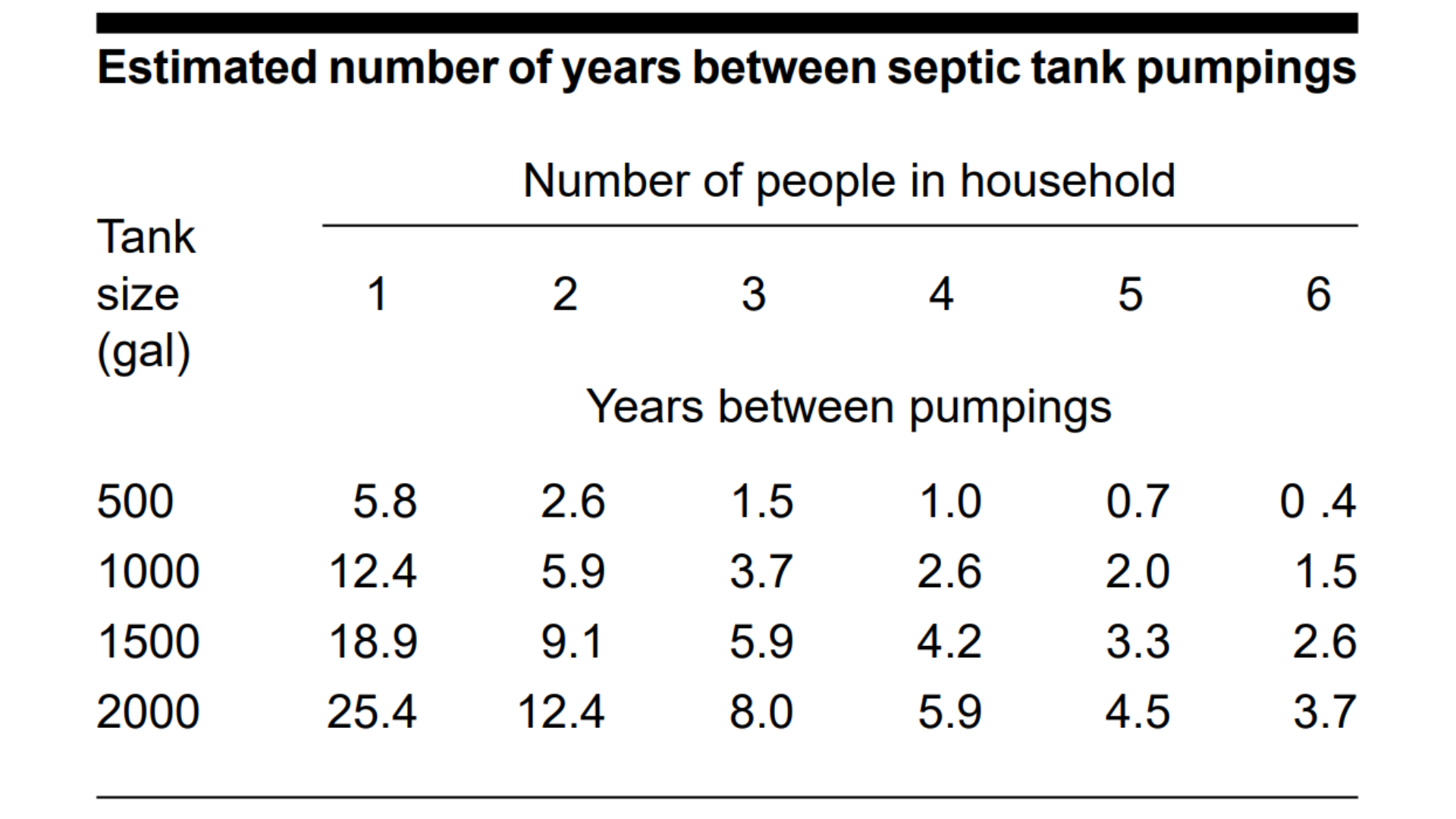
Note these are estimates and should be used to make good, sound decisions. Pumping a septic tank sooner than needed is better than pumping it too late. Late pumping can cause potential damage to the drainfield of the system due to the buildup of solids that can lead to costly repairs or replacements.
Financial Assistance
The state of Hawaii is one of thirteen states serviced by the Rural Community Assistance Corporation (RCAC). The RCAC provides grants and low-interest loans to qualifying residents to help in the purchase and work costs for the installation of a new well or septic tank system.
Need a Septic Tank in Hawaii? Trust the National Tank Outlet to Help
If you are located in Hawaii and in need of a septic tank, contact us here at the National Tank Outlet. If we can’t be the solution, we can help point you in the right direction. Our USA made polyethylene septic tanks are rotational mold manufactured by the leading companies in the industry including Norwesco, Snyder, and Ace Roto-Mold. Our septic tanks are IAPMO, ANSI, and state-approved across the U.S. If there is anything we can do to assist, contact us.
Additional Resources
- Hawaii Department of Health Wastewater Branch
- Hawaii Administrative Rules Title 11, Chapter 62
- Hawaii DOH Wastewater FAQs
Disclaimer: This guide is intended to provide general information and expectations around the installation and requirements of a septic tank and system in the state of Hawaii and is not intended to substitute for advice, legal counsel, or consultation from state departments or licensed professionals. The information provided is current and accurate to the best of our knowledge at the time of this writing. For specific advice on your individual situation, please consult with the Hawaii Department of Health (DOH) the Wastewater Branch, your local county department, or a licensed septic tank professional contractor.
